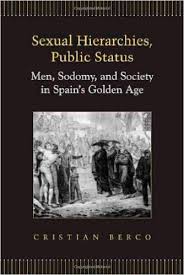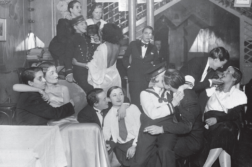 Sexual Hierarchies, Public Status: Men, Sodomy, and Society in Spain’s Golden Age
Sexual Hierarchies, Public Status: Men, Sodomy, and Society in Spain’s Golden Age
by Cristian Berco
University of Toronto Press
248 pages, $55.
DURING THE SUMMER of 1625 in the region of Valencia, Spain, three adolescent boys, Nicolás González, Joseph Carna, and Juan de la Vega, were accused of sodomy. Sons of local citizens, all three were of working-class families engaged as apprentices and laborers.
In the ensuing Inquisitorial trial, what was uncovered to the horror of many people was a web of prostitution in which the three boys engaged in sex with Muslim slaves in exchange for money and food. The slaves, while certainly on the lowest end of the social hierarchy of Valencia, worked for many of the wealthiest families and labored beyond these households, attaining money and food that they used to hire the boys for sex. The boys, in turn, traded sex for money as a way of supplementing their meager incomes. In the trial, one witness recounted that when the boys needed money, “Vega would say that he could get some,” and the witness described how Vega would meet up with a slave, returning later with money. One slave named Beli testified that González was at fault for “what happened with all the slaves and Christians” because he was their pimp.






